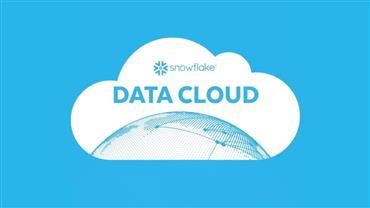
Snowflake: The Future of the Data Cloud?
In recent years, Snowflake has emerged as a major player in the cloud-based data warehousing industry. With its unique architecture and ability to handle massive amounts of data efficiently, Snowflake has revolutionized how enterprises manage, analyze, and store their data. But does Snowflake truly represent the future of the data cloud?
Founded in 2012, Snowflake has disrupted the traditional database and data warehousing markets by offering a cloud-native solution that separates compute and storage, allowing businesses to scale resources dynamically. Unlike traditional on-premise databases, Snowflake runs entirely on cloud platforms like Amazon Web Services (AWS), Microsoft Azure, and Google Cloud.
Snowflake's popularity is driven by several key features:
Separation of Storage and Compute: This architecture enables businesses to scale each component independently, optimizing cost and performance.
Multi-Cloud Capabilities: Unlike some competitors locked into a single cloud provider, Snowflake offers flexibility by running on multiple cloud environments.
Ease of Use: Snowflake simplifies data management with automated maintenance, eliminating the need for manual tuning.
Data Sharing and Collaboration: Snowflake allows seamless data sharing without the need for cumbersome ETL processes.
Support for Structured and Semi-Structured Data: The platform supports JSON, Parquet, Avro, and other semi-structured formats, making it highly versatile.
Despite its success, Snowflake faces strong competition from:
Amazon Redshift: AWS’s data warehouse solution, optimized for large-scale analytics.
Google BigQuery: Google’s fully managed data warehouse with built-in machine learning capabilities.
Microsoft Synapse Analytics: Integrated with Azure, this solution offers SQL-based analytics and big data processing.
Databricks: A unified data platform designed for analytics and AI workloads.
Each of these platforms has its strengths, but Snowflake’s cloud-agnostic approach and scalable pricing model have given it a competitive edge.
One of the most compelling aspects of Snowflake is its versatility. Businesses across various industries, including finance, healthcare, retail, and technology, have adopted Snowflake for different use cases:
Real-Time Analytics: Companies are leveraging Snowflake’s powerful data processing capabilities for real-time insights, helping drive better decision-making.
AI and Machine Learning: Snowflake integrates with leading AI and ML tools, allowing organizations to build predictive models on large datasets.
Data Governance and Compliance: Snowflake provides robust security features to ensure compliance with regulations such as GDPR and HIPAA.
Enterprise Data Lakes: Organizations use Snowflake to consolidate vast amounts of data from different sources into a single, accessible data lake.
While Snowflake has significant advantages, it also faces challenges:
Pricing Concerns: While Snowflake’s pay-as-you-go model offers flexibility, some businesses find costs unpredictable, especially with high query usage.
Vendor Lock-in Risks: Although multi-cloud functionality reduces dependence on a single provider, some enterprises worry about long-term reliance on Snowflake.
Performance at Scale: As businesses scale their data operations, performance optimization and cost efficiency become critical considerations.
Snowflake’s rapid adoption and continuous innovation suggest it is poised to be a key player in the future of the data cloud. As organizations increasingly shift towards cloud-native architectures, the demand for scalable, cost-effective, and secure data platforms will only grow.
However, Snowflake’s continued success will depend on:
Innovation in AI and Machine Learning: Integrating more advanced analytics and AI-driven capabilities.
Cost Optimization: Ensuring that its pay-as-you-go model remains competitive against other cloud offerings.
Expanding Enterprise Adoption: Convincing more enterprises to migrate from legacy systems.
Ecosystem Growth: Expanding partnerships with data integration tools and third-party applications to increase Snowflake’s functionality.
Looking ahead, Snowflake is actively working on expanding its offerings. With initiatives like Snowpark, which allows developers to write custom applications in various programming languages, and continued investments in AI-driven analytics, Snowflake is positioning itself as more than just a data warehouse—it aims to be a full-fledged data cloud ecosystem.
Additionally, Snowflake’s focus on enabling a Data Cloud Economy suggests a future where organizations seamlessly share and monetize their data assets, further solidifying its role in the digital transformation era.
With its strong momentum, Snowflake is well-positioned to shape the future of cloud data management. While competition is fierce, its unique capabilities and cloud-first approach make it a leading contender in the evolving data cloud landscape. As the industry continues to shift towards more intelligent and scalable data solutions, Snowflake’s role will likely become even more critical.
The future of the data cloud is still unfolding, but Snowflake has undoubtedly cemented itself as one of the key players to watch in the coming years.